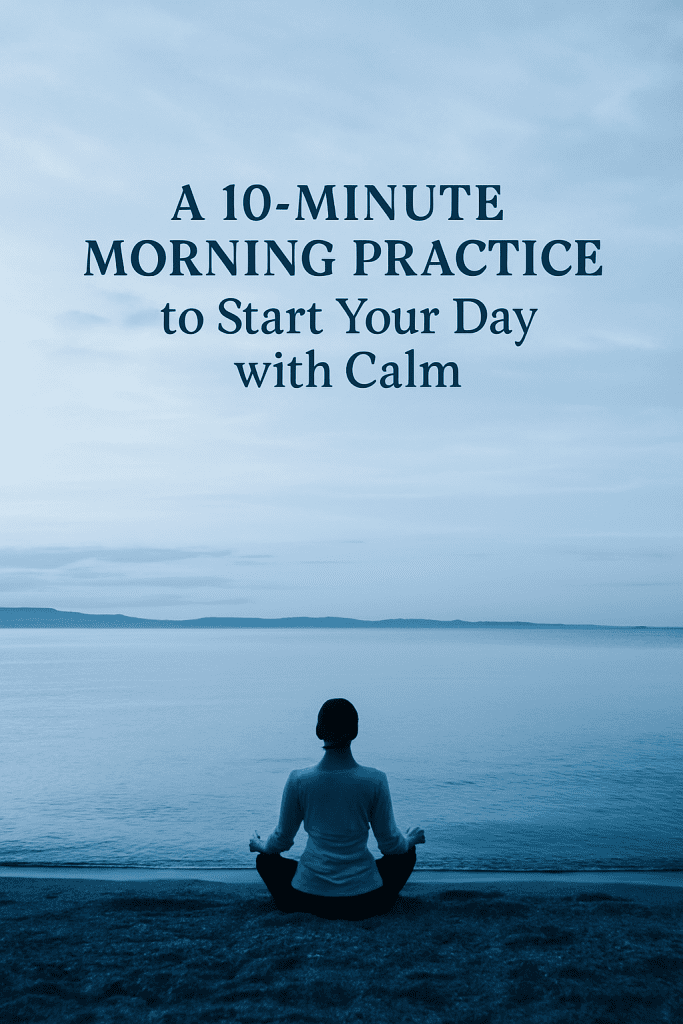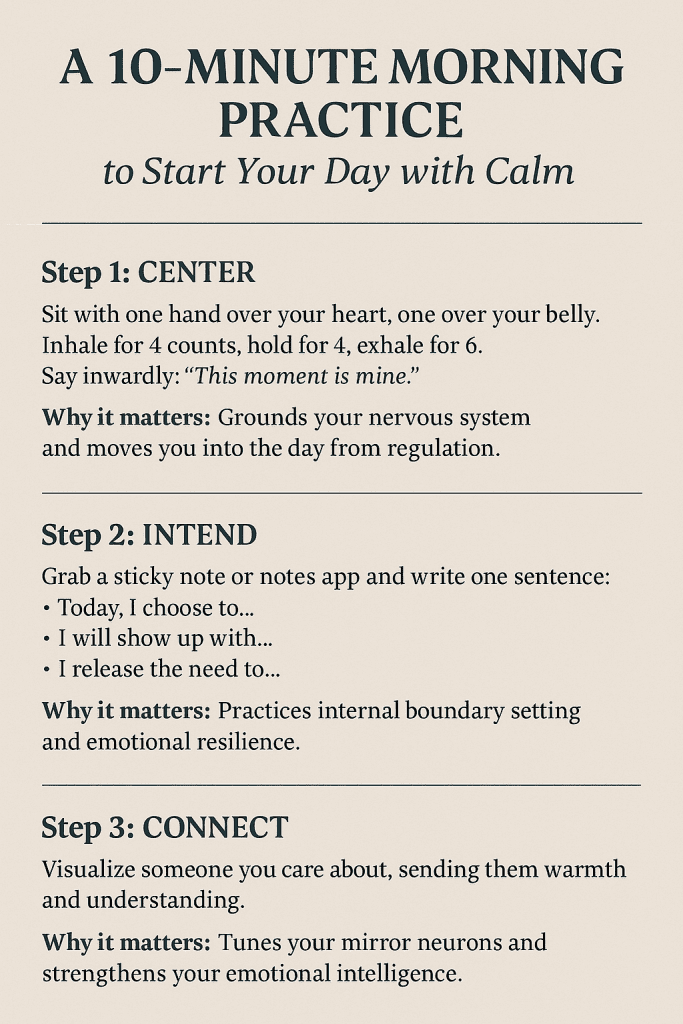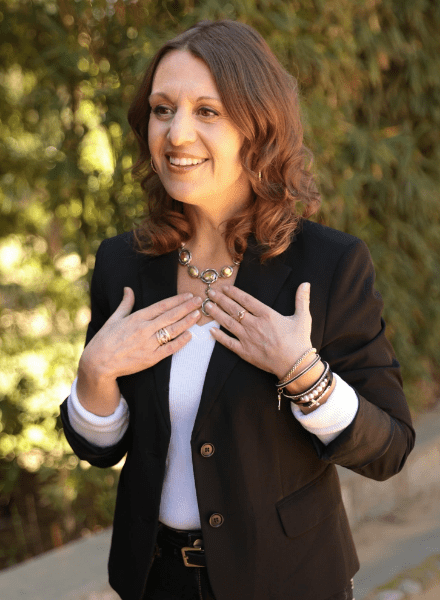In a world that rarely slows down, finding stillness before the day begins can feel like a luxury. Yet, in order to fulfill our dreams we have to decide that calm is NOT just something you’ve been hoping for—what if it IS something you created?
Whether you’re an executive jumping into back-to-back meetings, a parent navigating school drop-offs, or a teen facing pressure to perform, this 10-minute morning practice is for you!
Rooted in the same principles taught in Light in the Fog: Staying Positive & Connected in an Uncertain World, this mini-ritual helps you anchor yourself with presence, clarity, and connection.
Why It Works
This practice leans on neuroscience and attachment theory—designed to shift you from a reactive state into a regulated one. It acknowledges nonverbal cues, secure attachments, and the unspoken emotional landscapes we all carry. And the best part? It’s simple. No fancy journals or rigid schedules. Just you, your breath, and your intention.
The 10-Minute Calm Morning Practice
Step 1: Center (2 minutes)
Before you reach for your phone or start responding to anyone else’s needs—pause. Sit on the edge of your bed or by a window.
Place one hand over your heart and one over your belly. Inhale for 4 counts, hold for 4, exhale for 6. Repeat.
Say inwardly: “This moment is mine.”
What about this and Why it matters: This grounds your nervous system and signals to your body that you’re safe. You’re moving into the day from regulation, not reactivity.
Step 2: Intend (3 minutes)
Grab a sticky note or your notes app. Write one sentence:
- “Today, I choose to…”
- “I will show up with…” (Grace, Integrity, Humbleness)
- “I release the need to…”
Examples:
- “Today, I choose to listen more than I react.”
- “I will show up with soft strength.”
- “I release the need to fix what is not mine.”
Why it matters: You’re practicing internal boundary setting, an essential part of secure attachment and emotional resilience.
What about this will help for my anxiety? It takes courage to set the boundary in the first place. As we respect those you love, your commitment to communicate better to them makes this whole thing worth it!
Step 3: Connect (2 minutes)
Still in silence, visualize someone you care about—your child, your colleague, your younger self. Imagine sending them warmth and understanding, like a light extending from your heart to theirs.
Why it matters: This gentle compassion exercise tunes your mirror neurons and strengthens your emotional intelligence. You’re preparing to interpret nonverbal cues with clarity and empathy—not overload.
What does this do for your anxiety ?
It shortens the tension down from 3 hours to 10 minutes. Allow yourself 10 minutes to Regroup, Refocus, and Reenergize!
Step 4: Move (3 minutes)
Roll your shoulders. Stretch your arms. Open your chest. Walk slowly to the kitchen or bathroom with full awareness.
Optional: light a candle or play instrumental music as a transition into the rest of your day. Scents matter. Even your own. Quick question: how’s your hygiene?
Why it matters: Movement reaffirms your presence in your body, often the first thing we abandon in stress. It helps you show up secure, not scattered.
What does this do for your anxiety? It tells your cells that it’s time to come out of fight or flight mode. It helps the window of tolerance grow for the next level of tasks. Stay encouraged!
Who This Is For
- Executives who want to lead with clarity, not control.
- Moms and dads who are done sacrificing peace for productivity.
- Teens who need permission to feel before they perform.
It’s for anyone who knows that communication isn’t just what we say—it’s how we carry ourselves. How we breathe. How we begin.
Light in the Fog: Keep the Glow Going
In Light in the Fog, we explore these ideas deeper—how secure attachment isn’t just a theory, it’s a choice we can make every morning. When the world feels uncertain, rituals like this one remind you: you are the calm. You bring the connection.
You don’t need an hour. You just need ten minutes—and a willingness to return to yourself.






